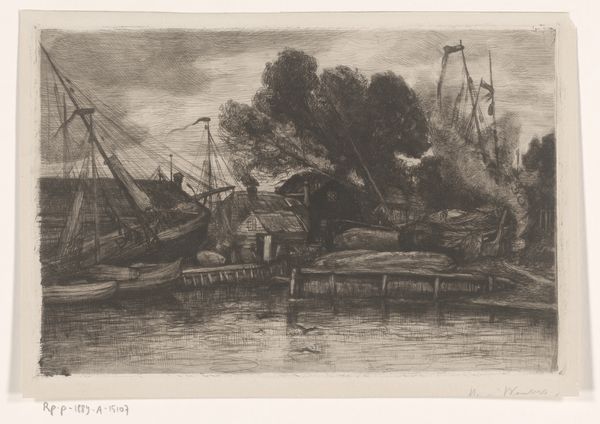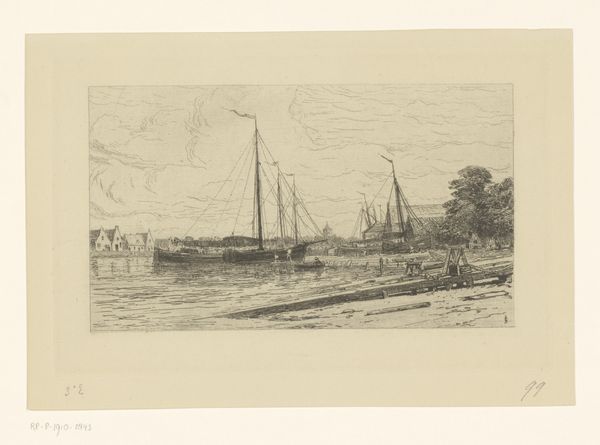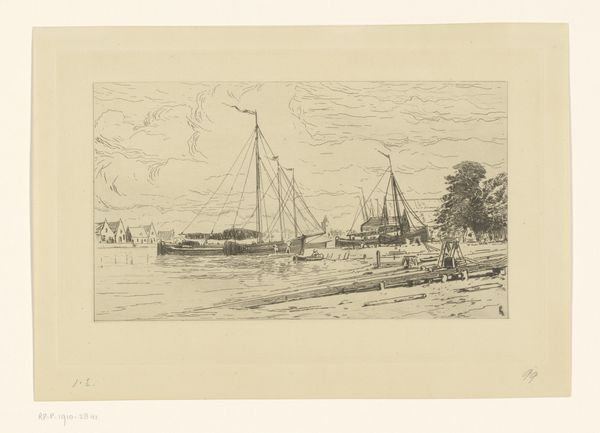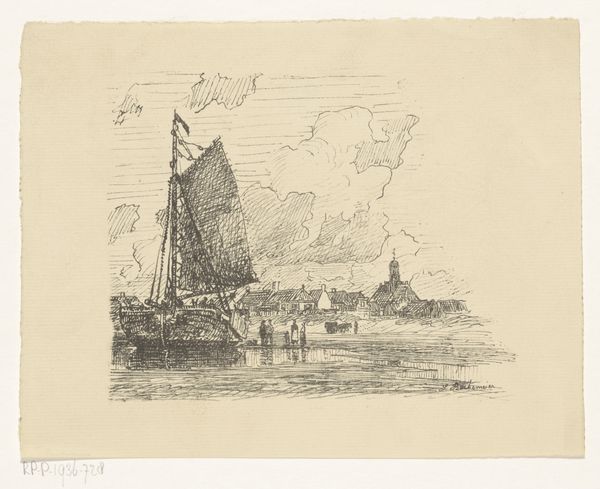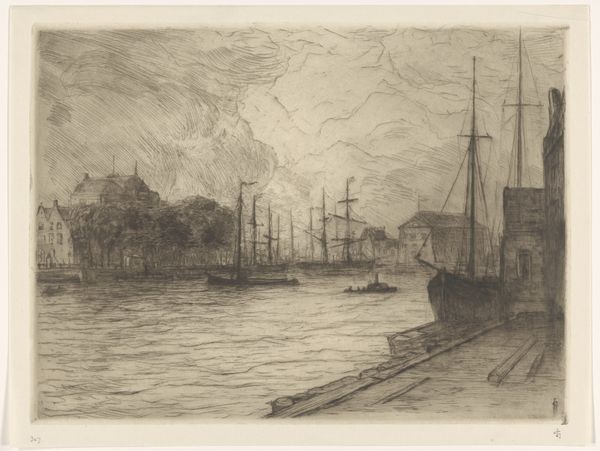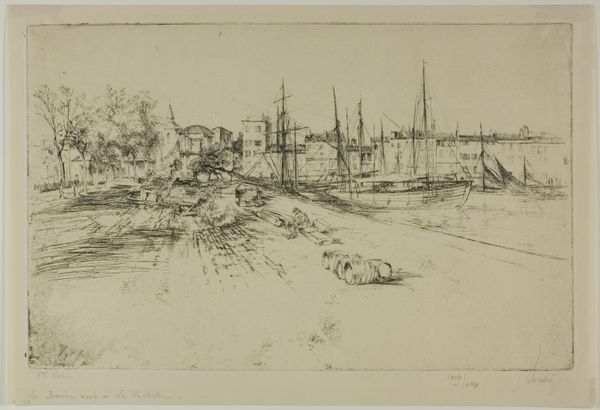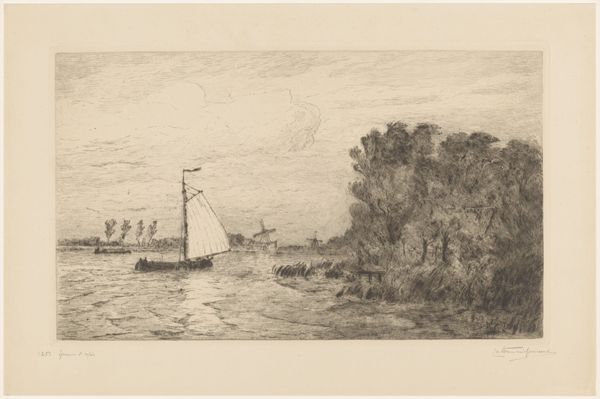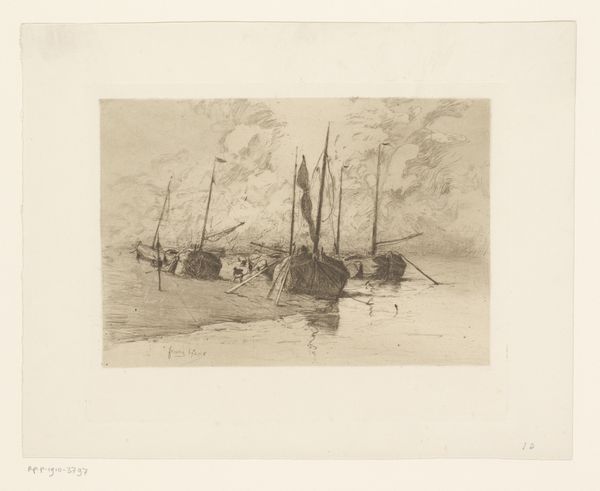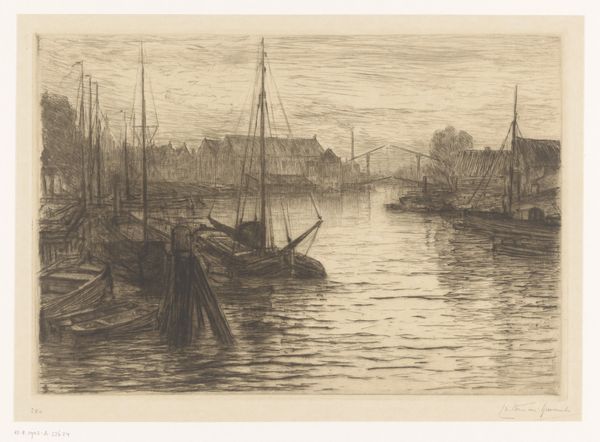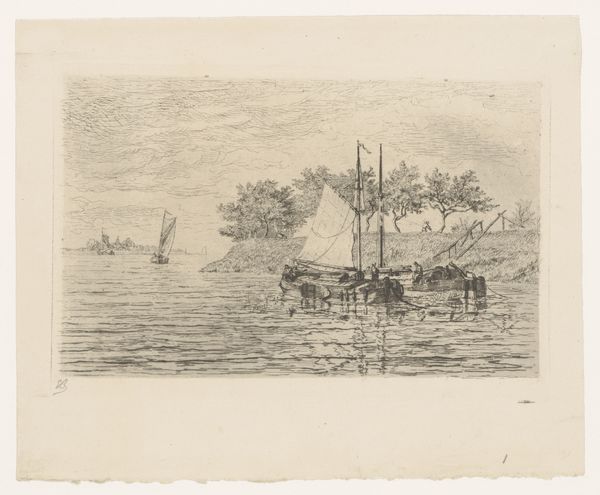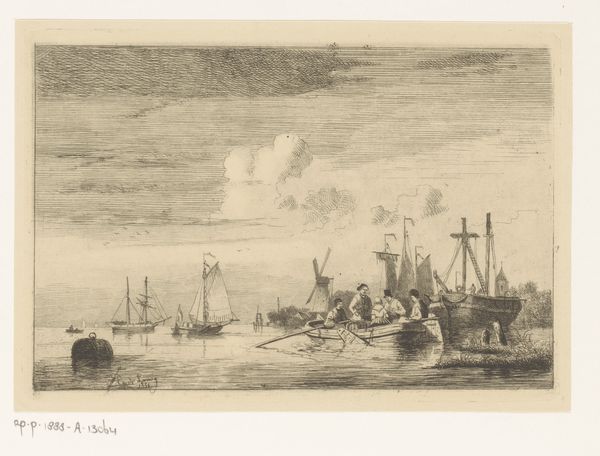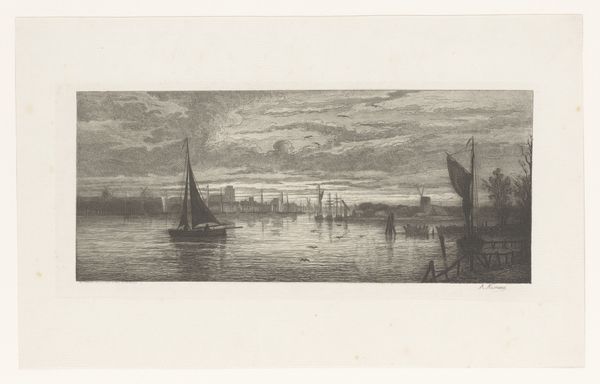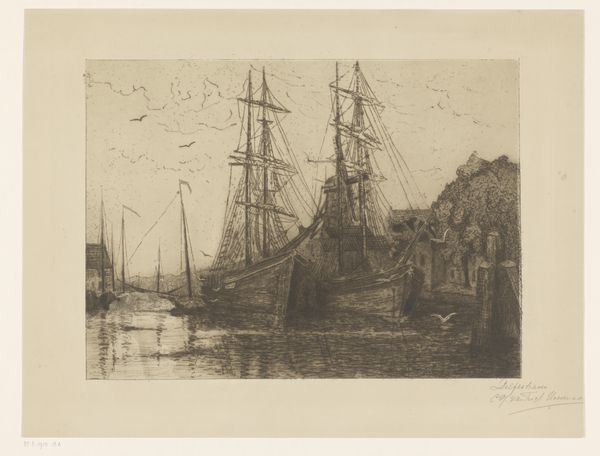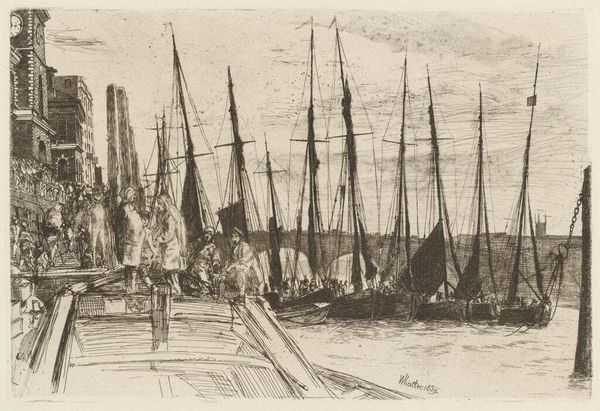
print, etching
#
dutch-golden-age
# print
#
etching
#
landscape
#
realism
Dimensions: height 200 mm, width 296 mm
Copyright: Rijks Museum: Open Domain
Curator: This is Henri Wouters' "Scheepswerf," or "Shipyard," an etching likely created between 1876 and 1890, and held here at the Rijksmuseum. Editor: It’s so delicately rendered! The density of lines really gives you the sense of a bustling, almost claustrophobic, space despite being an outdoor scene. All those ships crowding the docks… it makes me think about labor and commerce. Curator: Indeed. Water has always been symbolically potent. The maritime setting suggests a liminal space—a place of transition and possibility, the vessels serving as conduits between known shores and uncharted territories, prompting the viewer to question notions of origin and destination. Editor: I’m particularly interested in the technique. Etching allows for incredible detail, but the printing process also speaks to a wider audience. Multiple impressions meant this image could circulate and reach viewers beyond the elite art market. The image becomes a commodity itself. Curator: A crucial element, for me, is the placement of that large tree dominating the composition—the contrast between its natural, almost chaotic, form, against the angular structures built by human hands is striking, evoking the tension between nature and industry during a period of rapid modernization in the Netherlands. Editor: Right, the material cost of shipbuilding back then involved clear-cutting, milling, and transporting timbers, not to mention pitch production and the ironwork—an extraordinary consumption of resources! The shipyard embodies human ambition and resource extraction in equal measure. Curator: And look at the detail given to those ships’ masts. Their towering height reminds one of reaching for higher planes, aspiring to greater achievements—there is both a subtle pride and inherent fragility to such large constructions set on ever moving seas. Editor: Seeing the shipyard as a site of intense labor helps frame its cultural impact at the time. For some, shipbuilding represented a thriving industry, and for others the noise and dirt probably meant overwork. These printed images are part of negotiating those social issues. Curator: This scene reminds us of the persistent human urge to create, travel, and perhaps transcend—even if the water, material consumption, and industrial churn are ambivalent symbols of progress. Editor: It makes you appreciate the labor that goes into creating the objects around us, and reminds you not to take any of it for granted.
Comments
No comments
Be the first to comment and join the conversation on the ultimate creative platform.
